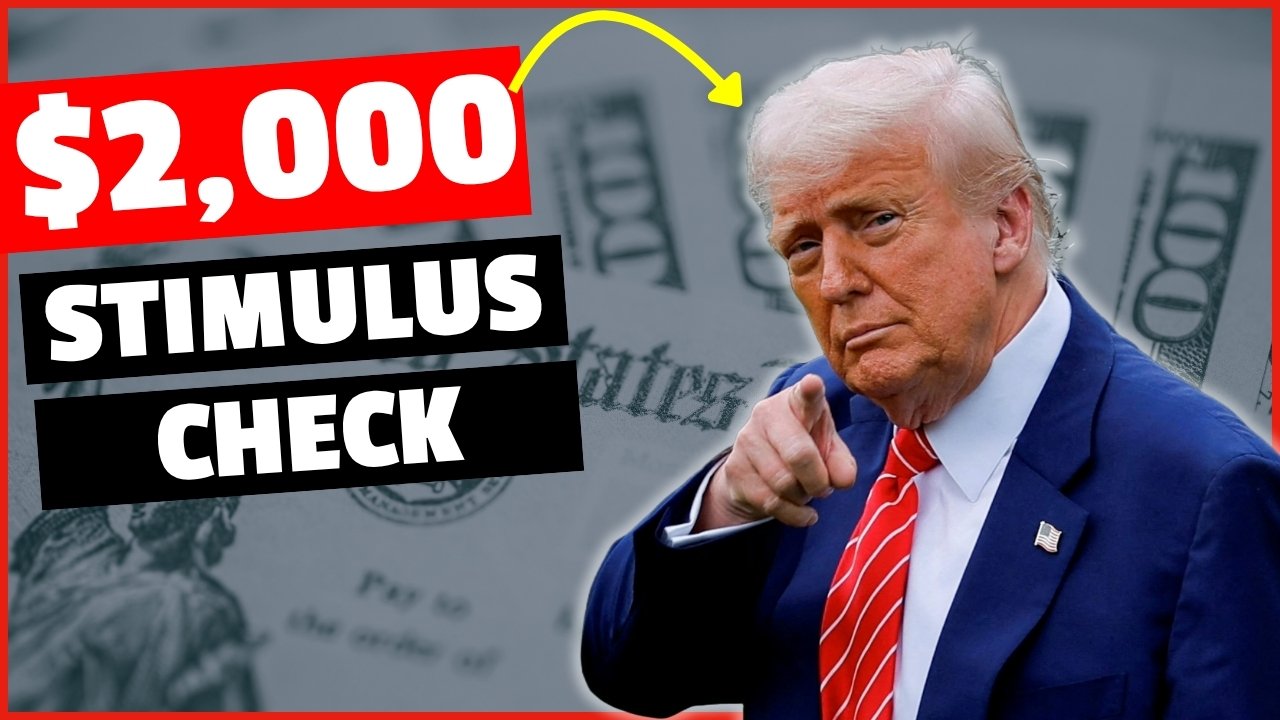President Donald Trump has put forward a plan that would issue $2,000 “dividend” checks to many Americans, funded by federal tariff revenue. The proposal frames import-duty collections as a pool of funds that could be returned directly to eligible citizens.
The headline amount is attention-grabbing, but the proposal remains incomplete: key details such as who qualifies, how the funds will be delivered, and the legal and fiscal basis are still under discussion. Analysts are examining whether the plan is feasible, how the payments might work, and what it could mean for households.
Table of Contents
What the Proposal Entails
Under the proposal, tariff revenue collected by the federal government from goods imported into the United States would be distributed in the form of a dividend check of $2,000 per person, subject to income thresholds (though exact thresholds have not been defined).
In a social media post, Trump stated: “A dividend of at least $2,000 a person (not including high-income people!) will be paid to everyone.”
The notion is to treat tariff collections somewhat like profits that are then shared with citizens. It mirrors stimulus-style payments seen in past years.
However, no formal legislation or detailed policy framework has yet been released to define the mechanics, timing, or eligibility criteria for this payout.
Who Could Be Eligible
The proposal specifies that high-income individuals would not qualify, indicating the focus would be on low- and middle-income Americans.
Exactly what “high income” means in this context has not been defined, whether it aligns with previous stimulus eligibility (for example, phase-outs around $75,000 individually) or some new threshold remains uncertain.
It is also unclear whether eligibility would be determined on an individual or household basis, or if dependents would qualify separately.
Until Congress drafts and passes specific legislation, any potential eligibility remains speculative and subject to change.
Funding and Cost Considerations
The administration has said that tariff collections would fund the payments. For example, the U.S. government reported collecting about $195 billion in customs duties in the first three quarters of fiscal year 2025.
One estimate suggests that if about 150 million adults earning up to, say, $100,000 annually were eligible and each received $2,000, the cost would reach roughly $300 billion, which exceeds the current level of tariff revenue collected.
Other analyses suggest that when factoring in offsets (for example, tax reductions elsewhere), the net available tariff revenue is closer to $90 billion, making the proposed payout far more costly than the likely funding pool.
In short, while the idea is ambitious, the funding math currently appears to leave a significant gap between proposed payments and actual revenue.
Legislative and Legal Hurdles
| Challenge | Details |
|---|---|
| Congressional approval | Legislation is required to authorize and allocate funds for such a payment. |
| Legal authority of tariffs | Some tariffs are under review by the Supreme Court of the United States; if deemed unlawful, refund obligations could reduce available revenue. |
| Timing & mechanism | No clear timeline or distribution mechanism has been defined; the process could face delays. |
| Budgetary and economic impact | The payout could increase deficits or trigger inflation, depending on how it is structured. |
Legal uncertainty surrounds some of the tariffs the plan is based upon. The Supreme Court is reviewing whether the president’s tariff authority under the International Emergency Economic Powers Act (IEEPA) is constitutional.
Because tariffs often affect consumer prices and supply chains, distributing checks based on them may raise questions about whether the payments simply offset costs already incurred by households.
Any bill authorizing the dividend would need to define how it integrates with existing tax and social-welfare systems, and how it would avoid duplicating or conflicting with prior stimulus efforts.
What It Could Mean for Households
If implemented as described, eligible Americans could receive one-time payments of $2,000 each, which might provide a financial boost for many households.
However, because eligibility criteria are not yet clear and because households may have already borne the cost of tariffs through higher prices, the net benefit could vary significantly across individuals.
Some households may already be absorbing increased costs of imported goods or goods with imported inputs, which could offset part of the benefit of the payment.
Until full details of eligibility rules, payment date, and method of delivery are defined, households should treat the payment as a potential benefit rather than a guaranteed windfall.
Next Steps and What to Watch
Key items to monitor include:
- Whether the White House or Treasury formally submits legislation detailing the payment amount, eligibility, and funding mechanism.
- How Congress responds in committee hearings and whether the bill includes clear income cut-offs, household vs individual basis, and payment timelines.
- How tariff revenue projections evolve if tariffs are reduced or challenged, available revenue may shrink.
- Whether the administration chooses to distribute payments as direct checks or instead opts for tax credits or other forms of benefit.
- How agencies design the distribution infrastructure: will the payments rely on IRS systems, Social Security, or new infrastructure?





Do anyone know when the tariffs check be put into our account
Please do not give out any of your information. I worked for the IRS for 16 yrs, there are so many scams out there.
I am in same position only cashapp and where to "apply" or how to…
How will I get mine I only have cash app and fs card
Get a chine card its free